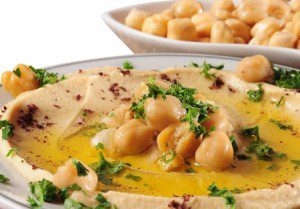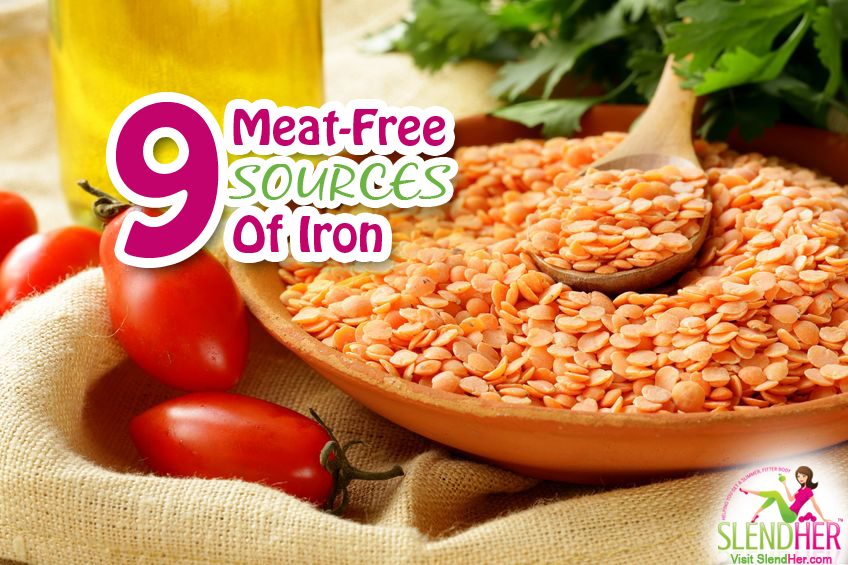It has become common diet guidance in today’s modern world that the way to get iron is to consume meat, however there are plenty of delicious nutritious plant based foods that are bursting with the nutrient.

The Importance of Iron
Iron is as important for your health as many other nutrients such as fibre, calcium and vitamin C. It is an essential mineral and is a component of haemoglobin, the pigment in blood that carries oxygen throughout the body. All of the tissues in our body need a good supply of oxygen to maintain life, so it is important to have plenty of iron running through the body to help the red blood cells transport the oxygen.
Iron also supports energy production as it helps the metabolism for muscles and other active organs. Our body burns calories to create energy through a process that requires iron, so when iron levels become low it can result in fatigue. Iron deficiency anaemia is a common disorder, especially in women, and is associated with fatigue, weakness, light-headedness and shortness of breath.
Increase Iron Intake
Iron is found in food in two forms, heme and non-heme iron. Heme iron is found in meat and fish. Non-heme iron is found in plants (fruits, vegetables, grains, legumes, seeds, nuts). Whether you eat meat or not, there are many benefits to choosing to eat plenty of plants. Check out 7 Dairy-Free Sources of Calcium which highlights a few important points about animal products or plant based foods.

When eating a diet abundant in fruits and vegetables you will automatically be eating a lot of vitamin C. Eating foods with high levels of vitamin C can enhance the availability of non-heme iron. Therefore, eating fruits and vegetables along with the iron-rich foods will enhance the absorption of iron. It’s a win-win situation, eat plenty of oranges, broccoli, spinach and lentils and your body will be full of vitamin C and iron, reaping the rewards for a stronger immunity and plenty of energy.
Iron is easily found in a variety of plant foods, just be sure to eat plenty of them on a regular basis to keep levels high and help the body to feel good.
9 Meat-Free Sources of Iron
- Blackstrap Molasses – Molasses is a thick syrup produced when the sugar cane plant is processed to make refined sugar for mass consumption. The molasses which is left behind is full of nutrition, including iron, calcium and magnesium. Add 1 to 2 tsp to smoothies, use in baking and add to oats.
- Spinach – The popular leafy green, spinach is an easy veggie to add to the diet. It has such a long list of nutrients, there are so many reasons to add this bright green goodie to your day. It bursts with vitamins A, B, C, E and K, iron, calcium, folate, fibre, magnesium, manganese and more! Add it to salads, smoothies, pasta and rice dishes.
- Lentils – Lentils are part of the legume family and contain a great mix of nutrients, such as folate, fibre, iron, protein, copper and manganese. Make a delicious homemade dahl, add to soups and enjoy mixed with spices.
- Chickpeas – Also known as garbanzo beans, chickpeas offer many nutrients including manganese, folate, iron, fibre, zinc and protein. Make a delicious homemade batch of the well-known hummus to go alongside raw crunchy veggies (double whammy of nutrients)! Add cooked chickpeas to salads, stews, soups and mixed with roasted veggies.
- Kidney Beans – These popular beans are cheap to buy from supermarkets making them an easy food to add to the diet. Similar to the other beans and legumes, they are packed with folate, fibre, iron, protein and manganese. Make a vegetable chilli with kidney beans, tomatoes, spices, other beans and sweet potato. Add the beans to soups and salads.
- Sesame Seeds/Tahini – Rich in nutrients, sesame seeds have a super dose of nutrients such as copper, manganese, calcium, magnesium and iron. Add the seeds to salads or sprinkle on cooked vegetables, make a simple dressing with tahini and lime juice, or use the tahini to make a batch of hummus.
- Parsley – This colourful herb has many nutrients such as vitamins A, C, K, folate and iron. You might not want to eat a big bowlful of parsley for dinner, however add chopped fresh parsley to salads and cooked veggies, make the classic Middle Eastern dish tabouli which is packed with parsley, make pesto and use in soups.
- Swiss Chard – Chard has a unique source of phytonutrients called betalains which have been shown to provide antioxidant and anti-inflammatory support to the body. The mighty big green leaves provide vitamins A, C, K, iron, calcium, magnesium, fibre, folate and more! Add to gluten free pasta with lemon, pepper and garlic and use in place of kale or spinach.
- Tomatoes – Fresh tomatoes and sundried tomatoes are packed with an incredible amount of nutrition, such as iron, vitamin C, biotin, fibre, manganese, folate and zinc. Add fresh tomatoes to a salad, make a salsa, homemade tomato soup, add sundried tomatoes to gluten free pasta dishes and homemade tomato sauces.
There are so many more wonderful iron rich foods from fruits, vegetables, legumes and seeds that will provide the body with an array of nutrients to help make you feel good every single day.
Feel energised, vibrant and healthy with nature’s finest foods.



Leave a Reply